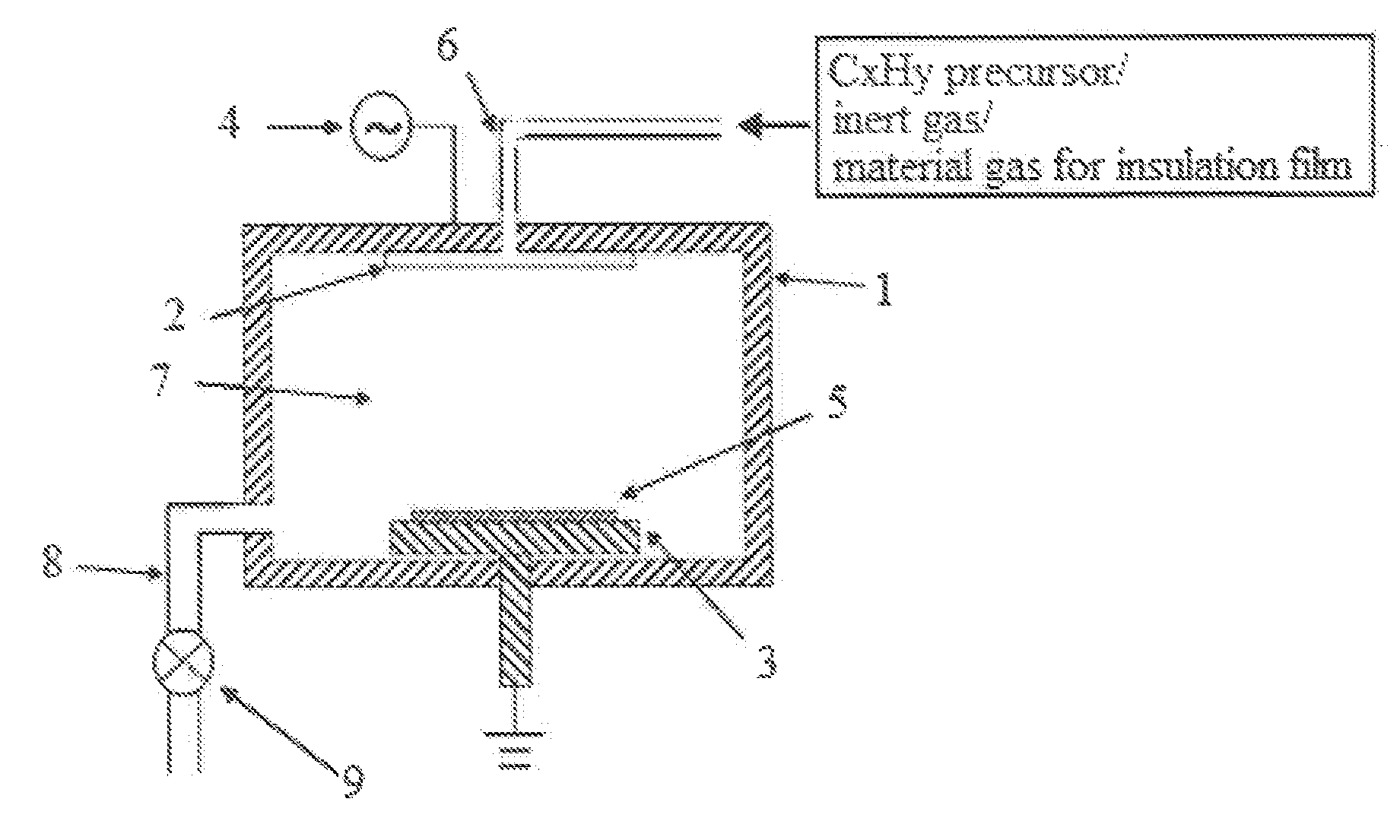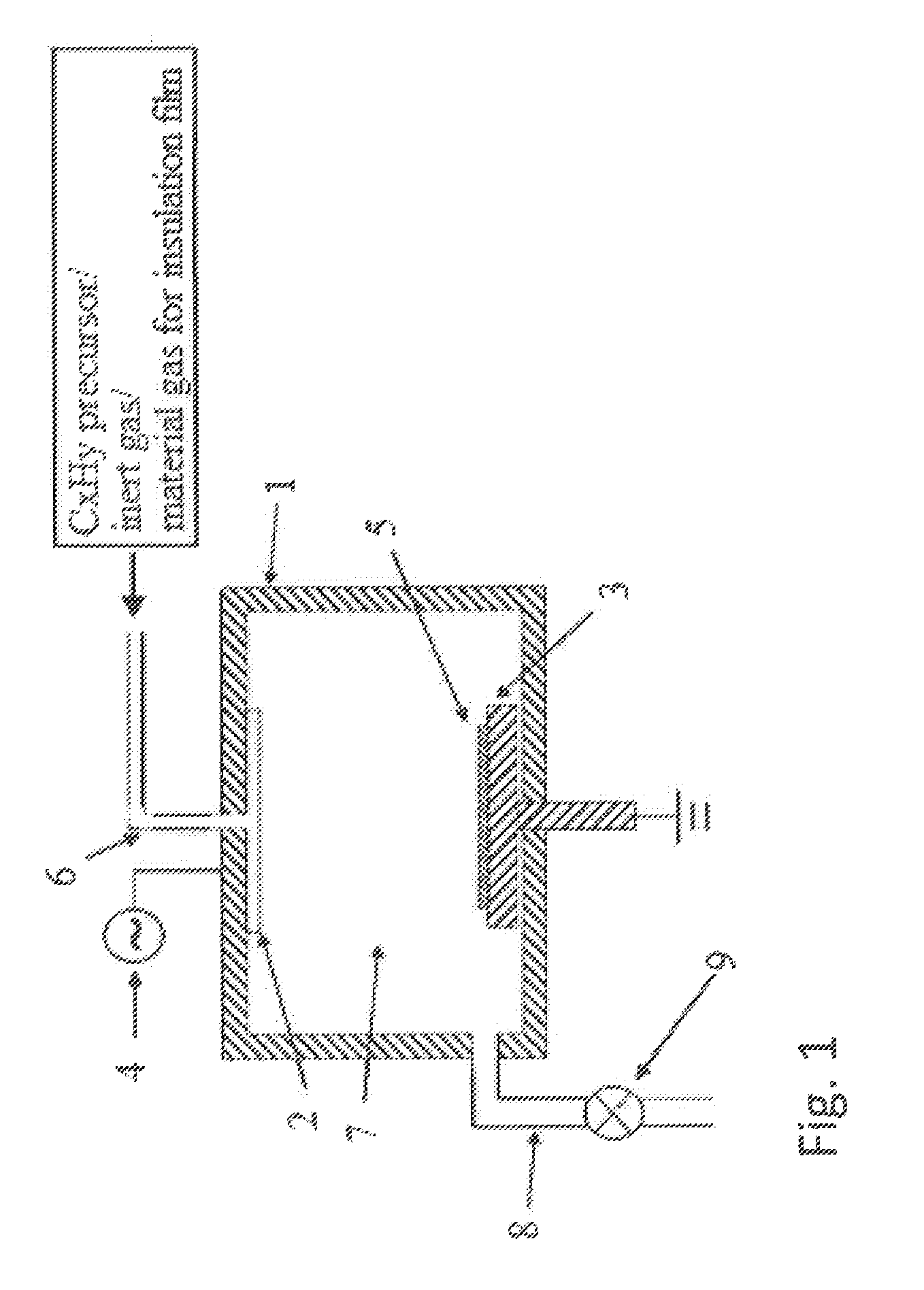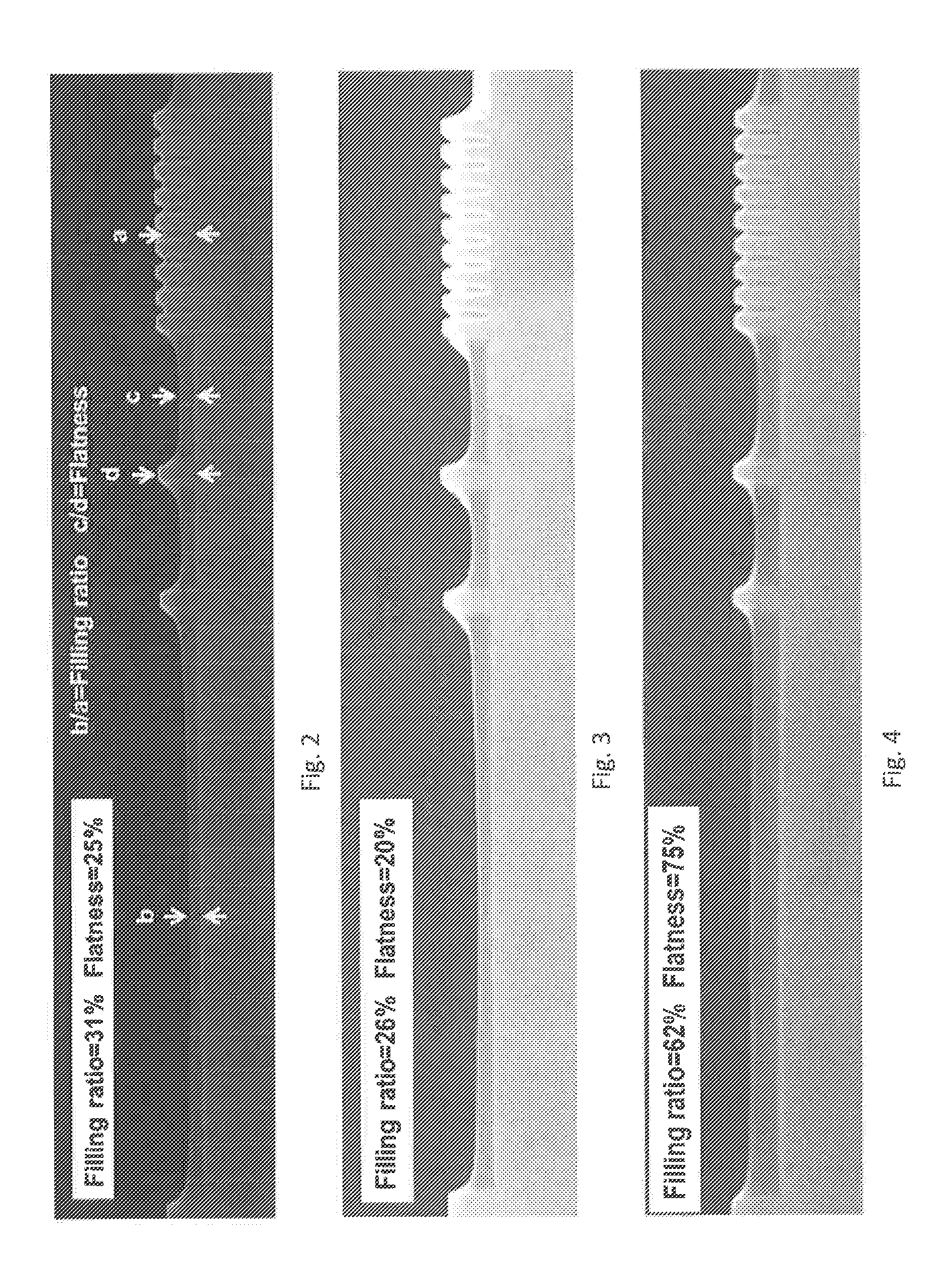Method For Filling Recesses Using Pre-Treatment With Hydrocarbon-Containing Gas
a hydrocarbon-containing gas and recess technology, applied in the direction of coatings, metallic material coating processes, chemical vapor deposition coatings, etc., can solve the problems of copper losing its advantage, increasing resistivity, and affecting the signal delay and power consumption. high
- Summary
- Abstract
- Description
- Claims
- Application Information
AI Technical Summary
Benefits of technology
Problems solved by technology
Method used
Image
Examples
example 1
[0052]The pre-deposition step was conducted under the following conditions:
TABLE 3Substrate temperature20°C.Pressure700PaGas used for pre-deposition stephexane (234 sccm)RF power200WDistance between electrodes9mmDuration60seconds
[0053]The deposition step was continuously conducted after the pre-deposition step to deposit a low-k film. As a result, the recesses were filled with the low-k film as shown in FIG. 4, and the filling ratio and the flatness were measured. As can be seen from FIG. 4, when a hexane plasma was used for the pre-deposition step, when narrow recesses were almost fully filled, wide recesses also were significantly filled (the filling ratio was measured as 62%), and intermediate recesses which represent flatness were also significantly filled relative to the height of the recesses (the flatness was measured as 75%).
[0054]Further, the dielectric constant of the insulation film was measured, and it was 2.83 which was equivalent to 2.80 which was the dielectric consta...
example 2
[0055]Patterned recesses of a substrate were filled with a flowable insulation film under the conditions which were the same as in Example 1 except for the duration of the pre-deposition step. FIG. 7 is a graph showing the relationship between growth rate (nm / min.) of the flowable insulation film and the duration (sec.) of the pre-deposition step (using a hexane plasma). As can be seen from FIG. 7, the growth rate of the flowable insulation film was improved by about 5%.
reference example 1
[0056]A Si substrate was exposed to a given plasma for a given time period in the reaction chamber under the conditions for the pre-deposition step described in Comparative Examples 1 and 2 and Example 1 above. The water contact angle of the exposed surface was measured. FIG. 5 is a graph showing the relationship between contact angle (°) of the Si substrate and the duration (sec.) of pre-deposition step.
[0057]As can be seen from FIG. 5, by exposing the surface to a hexane plasma, the contact angle of the surface was drastically increased, i.e., the surface became highly hydrophobic, even 10 seconds after the exposure (the contact angle was 80.4°). The contact angle of the surface was further increased by continuing exposure for another 10 seconds (a total of 20 seconds), reaching a contact angle of 95.4°. In contrast, the contact angle of the surface exposed to a He plasma or H2 plasma was not significantly increased even when extending exposure.
PUM
| Property | Measurement | Unit |
|---|---|---|
| water contact angle | aaaaa | aaaaa |
| thickness | aaaaa | aaaaa |
| temperature | aaaaa | aaaaa |
Abstract
Description
Claims
Application Information
 Login to View More
Login to View More - R&D
- Intellectual Property
- Life Sciences
- Materials
- Tech Scout
- Unparalleled Data Quality
- Higher Quality Content
- 60% Fewer Hallucinations
Browse by: Latest US Patents, China's latest patents, Technical Efficacy Thesaurus, Application Domain, Technology Topic, Popular Technical Reports.
© 2025 PatSnap. All rights reserved.Legal|Privacy policy|Modern Slavery Act Transparency Statement|Sitemap|About US| Contact US: help@patsnap.com



